[ QUOTE ]
Back on topic...
In general,here's what I believe happened,that may help answer a few questions that have been brought up,but by no means should this be taken as Verbatim.
The beginning of the engine dress line was a sea of racks full of engines and transmissions:small-block V-8's from Flint V-8 Engine and Tonawanda,big-block V-8's from Tonawanda,and L-6 engines from Flint Motor,plus manual transmissions from Saginaw and Muncie and automatics from Toledo,Cleveland,Warren,and Willow Run.
In the engine schedule area,the operator grabbed the next broadcast copy from the printer,verified the sequence number,noted the engine code required for that car,and moved an air-powered overhead hoist on traveling bridge rails over the correct engine rack.The specified engine was hoisted * out of the rack and transferred to the next hook on the overhead engine dress line conveyor,where the throwout bearing (on manuals) was greased and installed,along with the clutch fork boot.Another operator on the other side of the line repeated the process with the specified transmission,
which was then installed and bolted to the engine.On automatics,an air tool was used to rotate the flexplate,and the converter bolts were driven,followed by the lower cover.
The VIN derivative numbers were stamped in the next operation on both the engine pad and the transmission,using a gang-stamp holder and a dead blow hammer.From here on,all the crucial detail dress ornaments were added like plug wires,coil,engine harness,battery cables,carburetor,pulleys,alternator,starter,fan and clutch,A/C compressor,power steering pump,transmission cooler lines and fill tube,A.I.R. pump,diverter valve and air manifolds,drive belts,dipstick and tube,oil filter,engine and transmission mounts,PCV plumbing,vacuum fittings,fuel pump and fuel line,radiator hoses,and (if applicable) the transmission-mounted 4-speed manual shifter and linkage was installed and adjusted (3-speed manual floor shifters were mounted on the cross-member and adjusted later on the Chassis line).
Engine oil and transmission lube were added,and the completed engine/transmission assembly was conveyed to the chassis line for installation in the subframe.The engine line inspector wrote the engine,transmission and carburetor codes on the broadcast copy and put the sheet in a box for pickup by the scheduling clerk,which was needed to create the Protecto-O-Plate at the end of the assembly line.
*The front & rear engine pull hooks were most likely installed before this moment,to allow many of the procedures that followed to take place.
[/ QUOTE ]
That's exactly how it was done, lifted directly from my "First-Generation Camaro Assembly Process" paper at
http://www.camaros.org/assemblyprocess.shtml ; however, the engine lift brackets were installed at the engine plants, and were part of the engine as-shipped to the car assembly plants.
My Group at the Chevrolet Pilot Line in Flint developed the engine lift brackets in 1967 for the 1968 model year, and the corresponding plant engine hooks used on the Engine Dress Lines. Photo below shows the typical assortment of engine hooks required in an assembly plant prior to 1968 for carrying various engines by the exhaust manifolds on the left, and the only two hooks required for 1968 engines on the right.
There were constant battles with the Finance people for the first couple of years over leaving the brackets on the engines vs. removing them at the assembly plants after engine installation and returning them to the engine plants for re-use; this direction changed several times, and eventually they were left on the engines.

